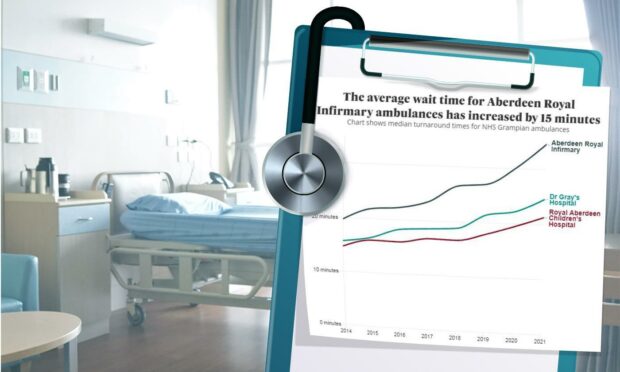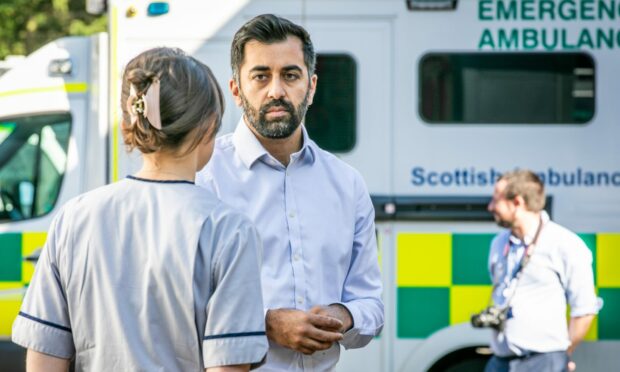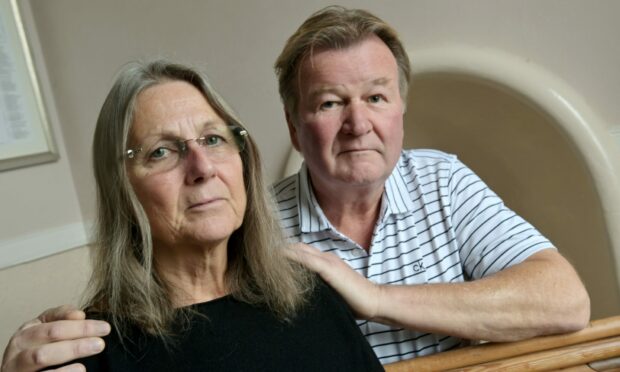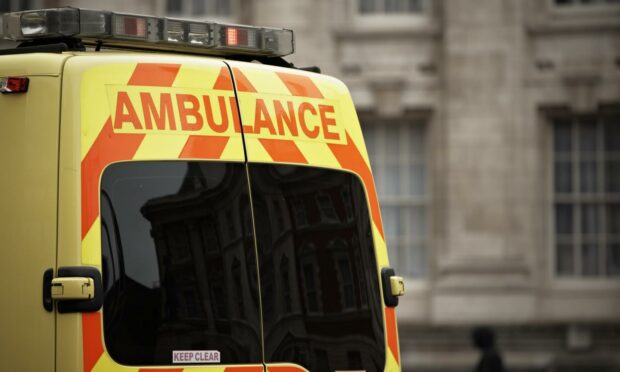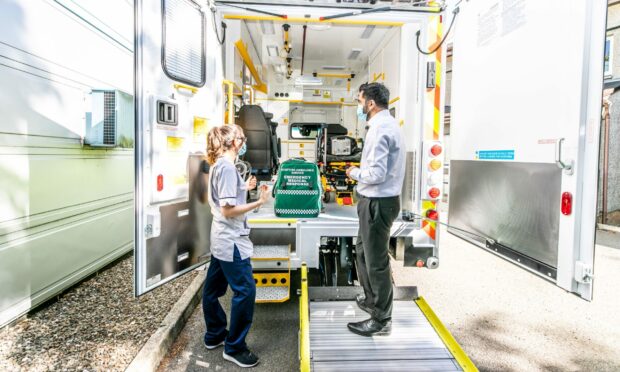Ambulances are being kept outside hospitals for hours amid an A&E crisis that has brought the health service to breaking point.
The dire situation was thrown into focus this summer, with people across Scotland left waiting in pain for paramedics to take them to hospital.
The problem was blamed on a post-lockdown spike in admissions to A&E wards still operating at reduced capacity due to Covid.
That meant ambulances were unable to drop patients off, having to linger outside hospital doors while people faced desperate waits for help to arrive.
Worst waiting time levels on record
Earlier this week it emerged that Scotland’s accident and emergency waiting times have hit their poorest level on record.
Among the worst facilities was Aberdeen Royal Infirmary (ARI), where just 64.3% of patients were seen to within four hours in the week ending October 3.
The Scottish Government’s target is 95%.
But critics have claimed that health bosses were staring down the barrel long before the issue became a catastrophe.
And our figures, revealing a worrying trend stretching back seven years, indicate that trouble has been brewing for some time.
Our chart shows just how the percentages have shifted since 2014 –
How many times have ambulances had to wait for hours outside hospitals?
The figures relating to ARI, Dr Gray’s Hospital in Elgin and the Royal Aberdeen Children’s Hospital were obtained via Freedom of Information legislation.
The phrase “turnaround time” refers to the period ambulances spend outside hospitals before being able to attend their next call.
In 2014, of 21,410 trips to ARI, the average turnaround time was 19 minutes and 40 seconds.
That has steadily increased every year since then, reaching 26:27 by 2018.
The statistic soared to 34:38 for the 14,260 trips between this January and the end of July.
Our table shows the increase in average turnaround times, hover over the lines to see the figures for each year –
Meanwhile, the number of times an ambulance was stuck outside ARI for more than an hour went from 136 in 2014 to 420 in 2019.
The pandemic made matters much worse, with it happening 1,686 times in 2020 and 2,828 times in the first seven months of this year.
The number of ambulances waiting more than two hours went from seven in 2014 to 637 in 2021 so far.
Meanwhile 104 have had to wait more than three hours this year and a dozen have had to idle for more than four hours.
The longest turnaround time recorded in 2014 was four hours. In 2021, the longest wait was just over 23-and-a-half hours.
Hover over each bar for more details –
Moray patients better off
At Dr Gray’s Hospital in Elgin, the average turnaround time went up from 15:40 in 2014 to 24:34 this year.
There were 5,136 patients taken to hospital by ambulance in 2014 compared to 2,447 between January and July 2021.
Again, the average waiting time has increased every year since 2014.
The number of ambulances that have had to wait more than an hour went up from 17 then to 139 in 2021.
But in Moray, a number smaller than five had to wait more than two hours and none endured longer stays at Dr Gray’s than that.
The longest turnaround time recorded in 2021 has been two hours and 40 minutes.
Hover over each line to see the number of patients taken to each hospital by ambulance every year –
At the Royal Aberdeen Children’s Hospital, ambulance waiting times went up from an average of 14:41 in 2014 to 21:16 this year.
There were seven occasions when ambulances had to wait more than an hour before dropping off their young patients in 2021, and the longest turnaround time was just over three hours.
Hover over each bar in this chart to reveal the different percentages –
Ambulance turnaround times ‘a matter of life and death’
Scottish Labour deputy leader and health spokeswoman Jackie Baillie said the figures showed how “these problems have been building for years”.
She added: “These appalling figures lay bare the chaos that has engulfed ambulance services in the north-east and across Scotland.
“Ambulance turnaround times are quite literally a matter of life and death for some people.
“The SNP failed to get their house in order before the pandemic – and now we are paying the price.”
Scottish Conservatives leader Douglas Ross said: “Ambulance services across the north-east have been underfunded for far too long by the SNP.
“Ministers cannot continue to hide behind Covid for their failure over a number of years to support overwhelmed ambulance staff.
“These figures lay bare how the pandemic has completely exacerbated this crisis in our ambulance service.”
Renewed efforts to tackle ambulance turnaround times
The Scottish Ambulance Service told us that capacity issues at A&E departments “continue to be a major issue”.
A spokesman said: “We are working closely with health boards across Scotland to try and minimise these.
“We collaborate with NHS Grampian and NHS Highland, alongside all other health boards, on a daily basis and initiate joint escalation plans as appropriate to manage risks associated with ambulance turnaround delays at hospitals.”
The spokesman highlighted other efforts to address the issue, such as increasing “alternative care pathways” allowing people to be treated without attending hospital.
He also said a further 11 hospital ambulance liaison officers (Halos) are being recruited to “assist with flow at hospitals”.
A Scottish Government spokeswoman pledged that a review of the ambulance service should yield some long-term solutions – with new ambulances and 300 new workers being taken on.
She added: “The Covid-19 pandemic has been the biggest shock the NHS has suffered in its 73-year existence and has heaped pressure on our ambulance service and wider NHS.
“The Health Secretary recently set out £20 million of additional funding to help increase ambulance service capacity, improve response times and staff wellbeing.”
